Dwarf Planet Ceres' Bright Spots Suggest an Ancient Ocean
NEW ORLEANS — The dwarf planet Ceres' famous bright spots suggest that the gray, crater-laden world is surprisingly active, a new study reports.
Ceres' bright patches may overlie pools of salty water, which could be the remnants of an ancient, subsurface ocean, study team members said.
"It's possible there is still brine coming up to the surface," lead author Nathan Stein, a planetary scientist at the California Institute of Technology in Pasadena, told Space.com. "It's certainly intriguing." [Awesome Ceres Photos by NASA's Dawn Spacecraft]
Stein and his team categorized the more than 300 bright patches on Ceres' surface into four groups, while planetary geologist Lynnae Quick, of the Smithsonian Institution in Washington, D.C., examined what could be driving the spots' differences. Along with Carol Raymond, the deputy principal investigator for NASA's Dawn mission, which has been orbiting Ceres since March 2015, the pair presented their results here at the American Geophysical Union meeting on Tuesday (Dec. 12).
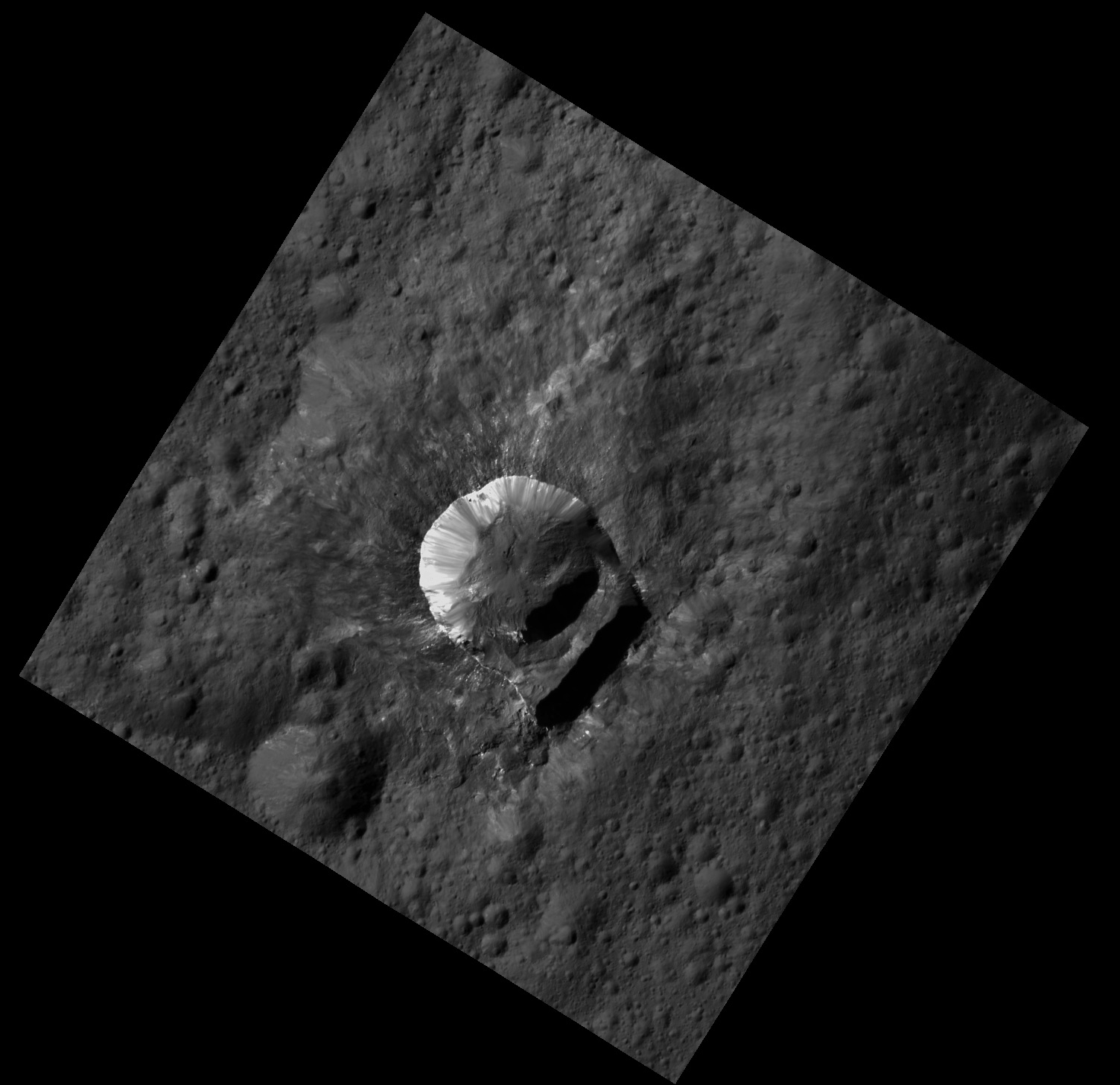
Ceres' shiny spots
As Dawn approached Ceres in the spring of 2015, the spacecraft spotted a handful of bright glints on the dwarf planet's surface. Further investigation revealed a wealth of spots made of salts stretching across the planet, almost all of them in or around craters. Variations in the spots' appearance have helped scientists better understand how they may have formed.
Stein found that the most reflective material on Ceres tends to lie at the bottom of craters. Some of the first spots identified sit on the floor of 57-mile-wide (92 kilometers) Occator Crater, which hosts two prominent bright areas, Cerealia Facula in the center and Vinalia Faculae to the east. Cerealia Faculae is a collection of the brightest material on Ceres, spread over a 6-mile-wide (10 km) pit with a small dome in its center. Vinalia Faculae is fainter and slightly less reflective.
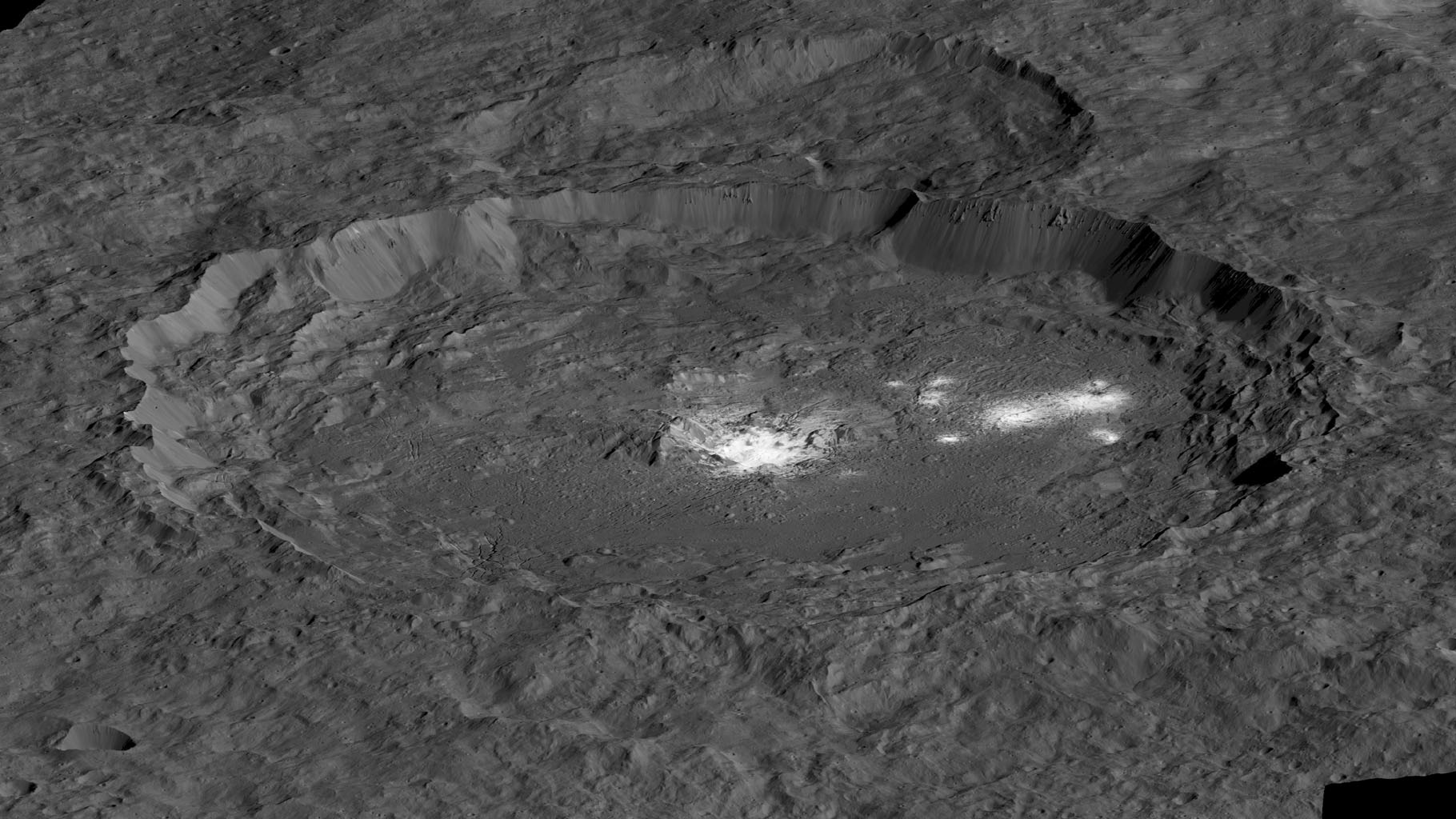
Another type of Ceres bright material perches on the rims of craters, streaking downward. More common than the material on the floor, this stuff was most likely exposed by objects that crashed into Ceres. The third class of material, spread around the edges of craters, was probably ejected by impactors, the researchers determined.
Get the Space.com Newsletter
Breaking space news, the latest updates on rocket launches, skywatching events and more!
The "lonely mountain" Ahuna Mons, with bright spots on its flanks, is in a class by itself. The only big peak on Ceres, it has no clear connection with a crater. Instead, scientists think Ahuna Mons is most likely a cryovolcano, created by the accumulation of flowing ice.
Freshly exposed material is bright, but, over millions of years, the spots slowly mix with the dark material that covers the surface of Ceres. In the past, thousands of brightly gleaming spots may have speckled the dwarf planet, the researchers said. [What Would It Be Like to Live on Ceres?]
The new study will appear in the journal Icarus.
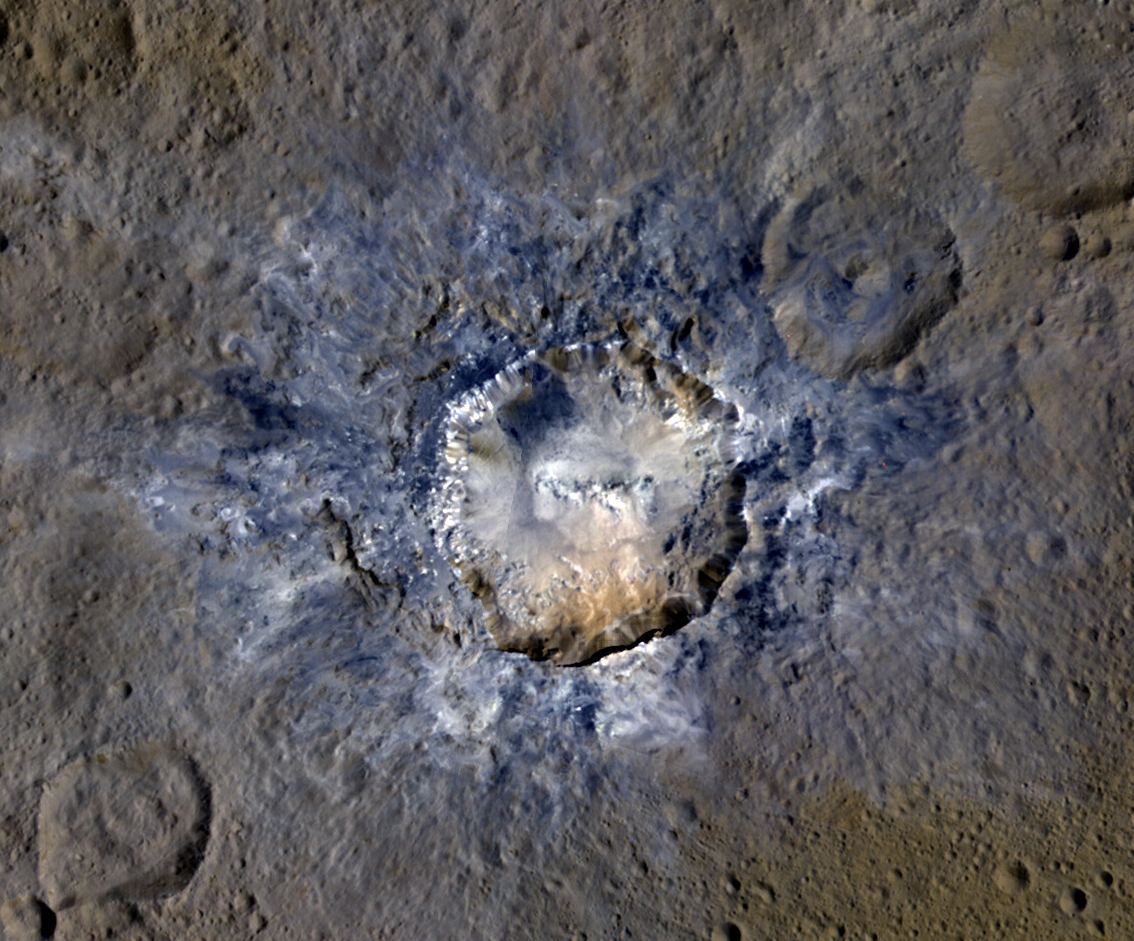
Shaken Ceres soda
The source of the bright spots was a question that plagued Quick. Although the spots could have formed via several different means, the team members believe they most likely originated from pockets of brine beneath the surface — the remnants of a liquid layer in the past.
"We believe these bright spots are a sign that Ceres once had a global ocean," Quick said. In fact, she suggested that the activity that is happening on the dwarf planet may also be occurring on a larger scale on the icy moons of the outer solar system, such as Jupiter's moon Europa and Saturn's satellite Enceladus.
If this interpretation is correct, Ceres' ocean slowly froze out over time, leaving behind what Stein called "discrete pockets of brines." Scientists suspect these are isolated pools rather than a complete liquid layer, because the bright spots themselves are discontinuous, he explained. "Not every new crater exposes [brines]," Stein said.
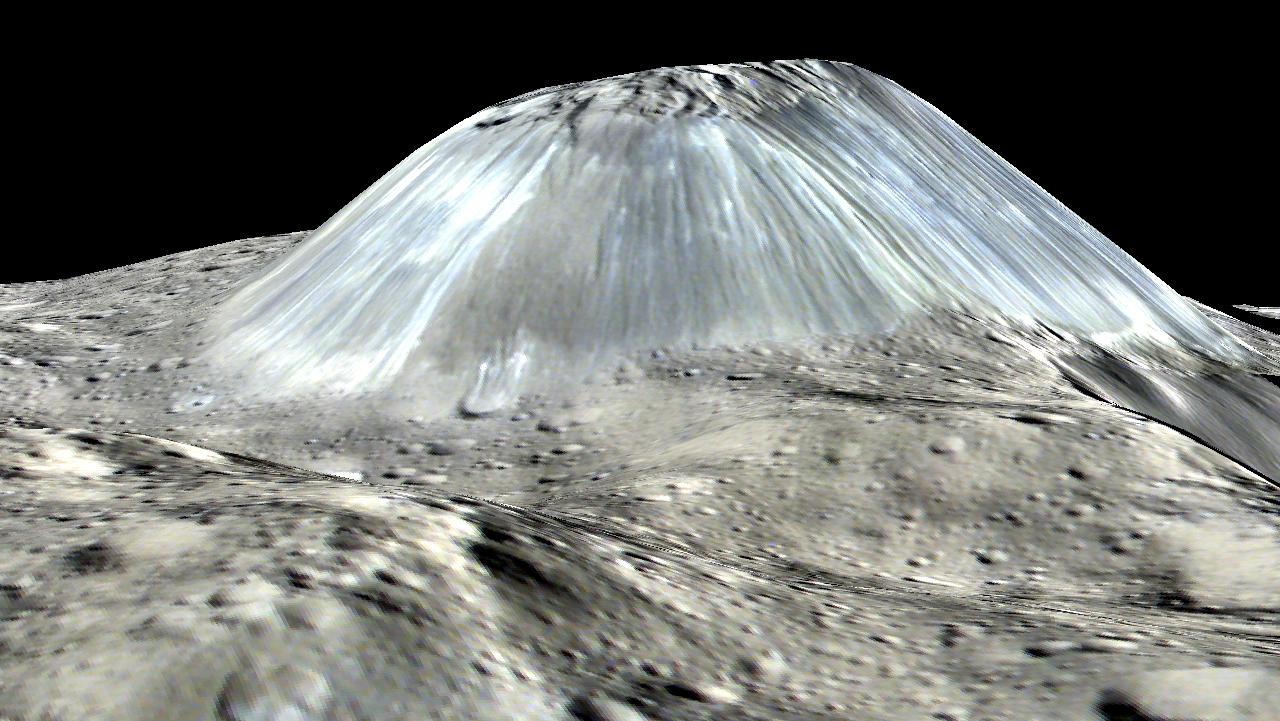
As the briny liquid cooled and began to freeze, the expanding ice pushed the liquid up, Quick said. In many cases, brines could have been pushed to the surface through a network of fractures. Another option is that impactors "squeezed and pinched" these pockets, she said, creating pressure that shoved material upward.
Things get even more interesting when the salty liquid pops out from underground, onto Ceres' airless surface.
"When brines get to the surface, they are going to want to fountain or boil," Quick said. She compared the process to a shaken soda can after it's been opened. Such spewing soda is caused by interacting gases that make the liquid expand or fountain up and out.
"We believe that when brines get to the surface on Ceres, that's what happening," she said.
When the material is thin, it may spew outward in an arc, splashing icy particles around the surface. This could explain some of the diffuse groupings of spots, Quick said.
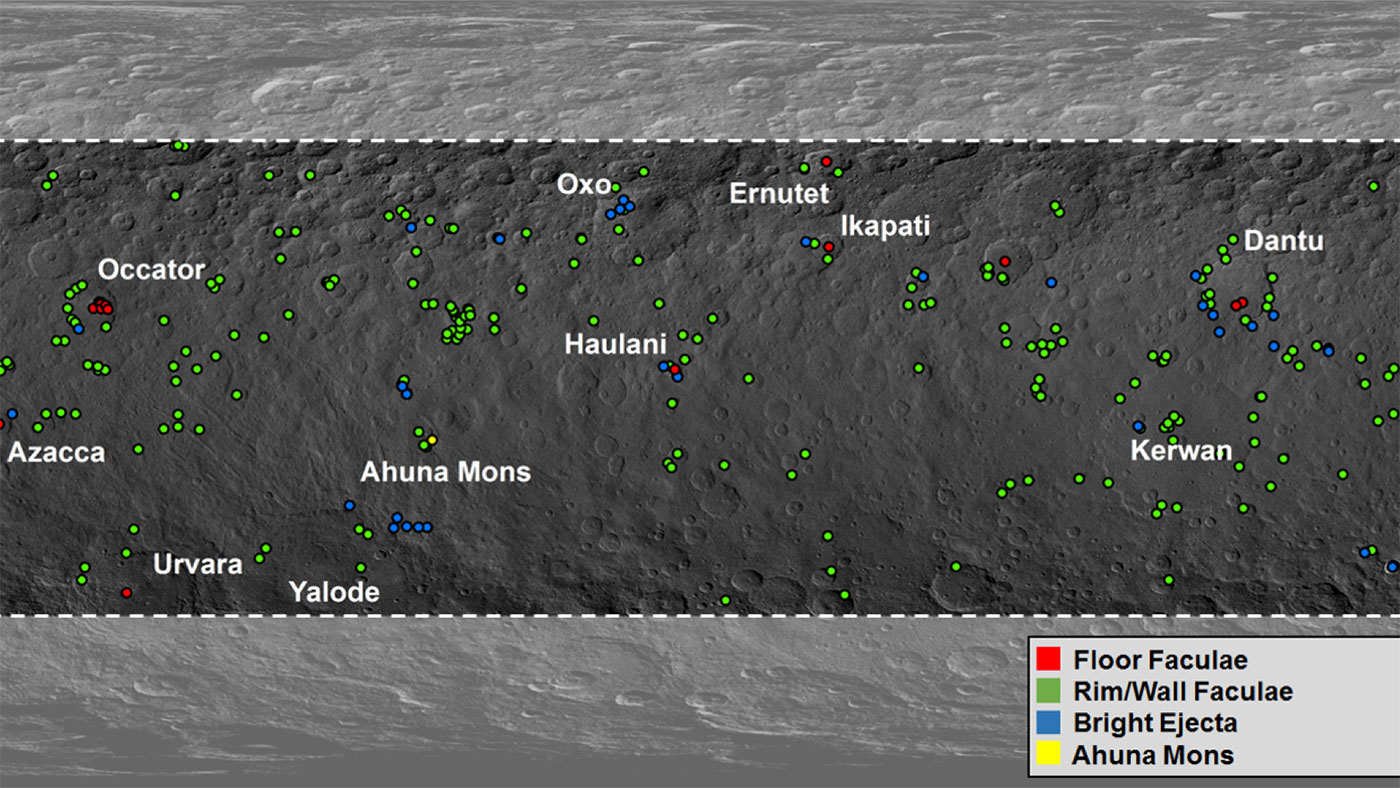
Thicker, icy lava may have created the superbright Cerealia Facula, the researchers said. As the material seeped through cracks to the surface, it likely formed a dome. The outermost layers froze into an icy shield that insulated the frigid lava beneath. New bright spots formed on the surface as cracks or ruptures allowed material to fountain outward.
Ahuna Mons most likely took this process to extremes, piling icy lava on top of itself to create its towering heights. Nicks in the surface allowed material to boil out, creating the icy spots visible on the mountain's flanks today.
According to Stein, the majority of Ceres' bright spots are young, no more than a few tens of millions of years old. (Keep in mind that the solar system itself is a whopping 4.5 billion years old.) That could mean that Ceres is still active today, he said.
"Ceres really isn't a dead world," Stein said. "As Dawn continues its mission, we're going to continue to try to characterize and understand in more detail how these bright deposits formed."
Follow Nola Taylor Redd on Twitter @NolaTRedd or Google+. Follow us at @Spacedotcom, Facebook or Google+. Originally published on Space.com.
Join our Space Forums to keep talking space on the latest missions, night sky and more! And if you have a news tip, correction or comment, let us know at: community@space.com.

Nola Taylor Tillman is a contributing writer for Space.com. She loves all things space and astronomy-related, and enjoys the opportunity to learn more. She has a Bachelor’s degree in English and Astrophysics from Agnes Scott college and served as an intern at Sky & Telescope magazine. In her free time, she homeschools her four children. Follow her on Twitter at @NolaTRedd









